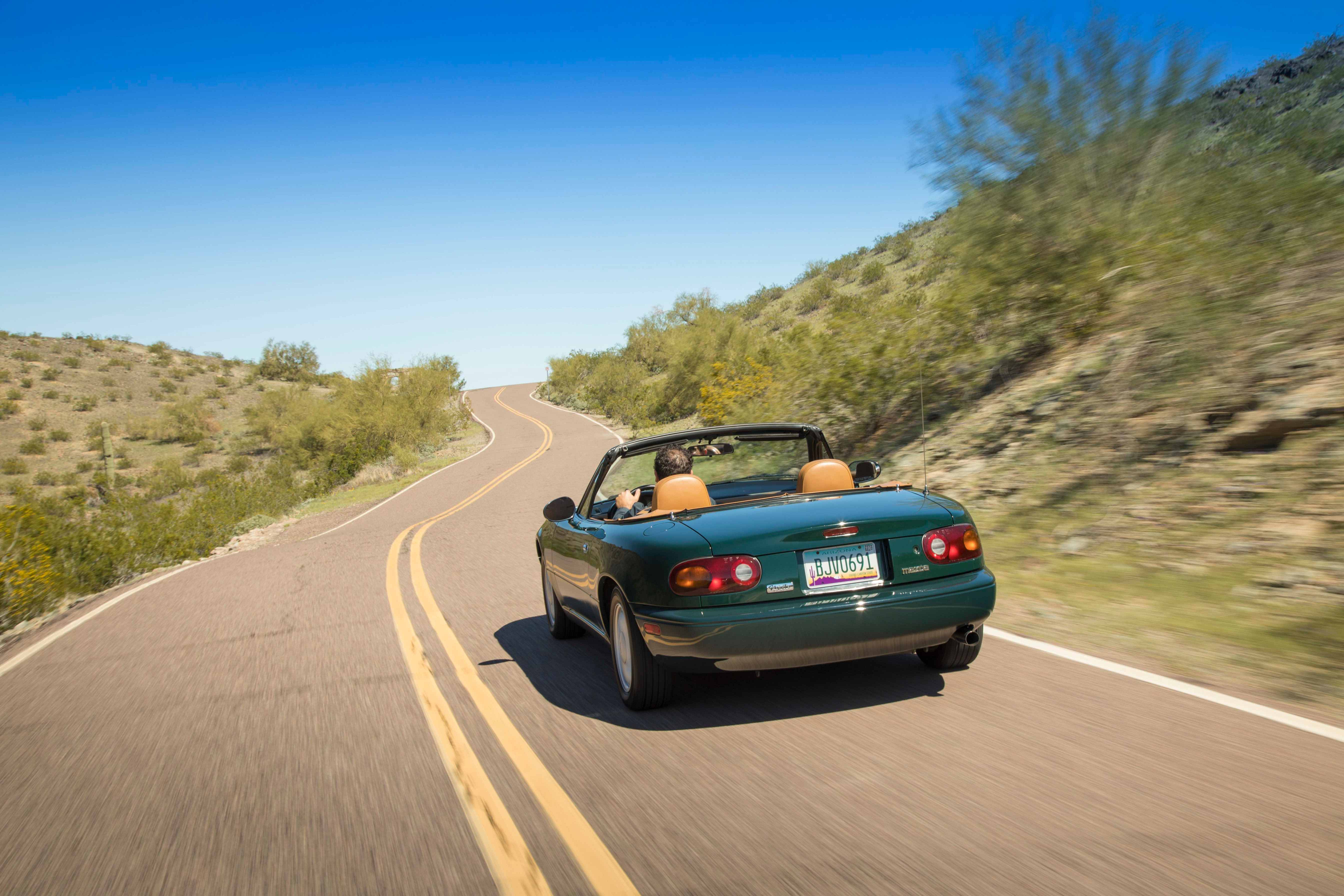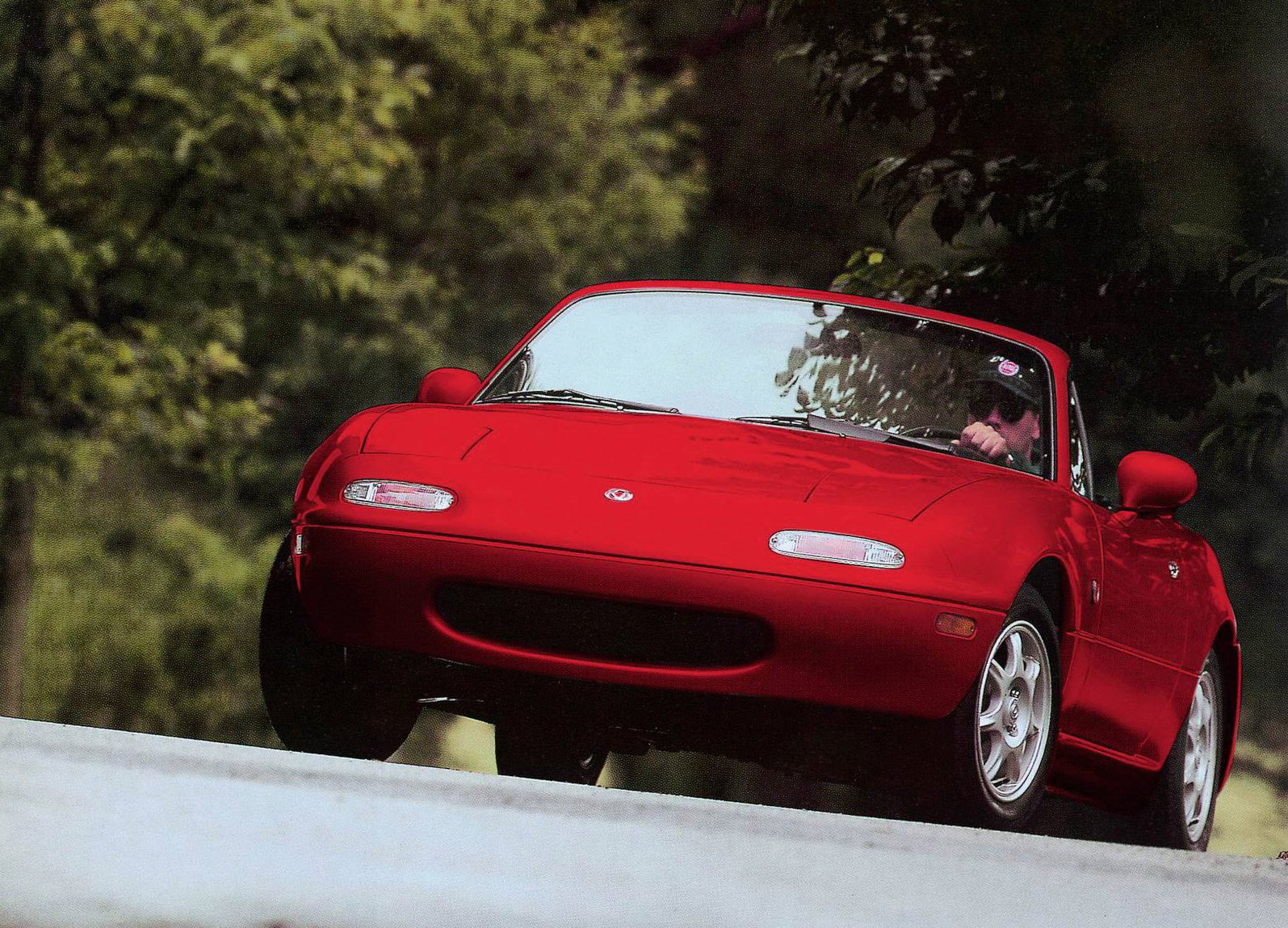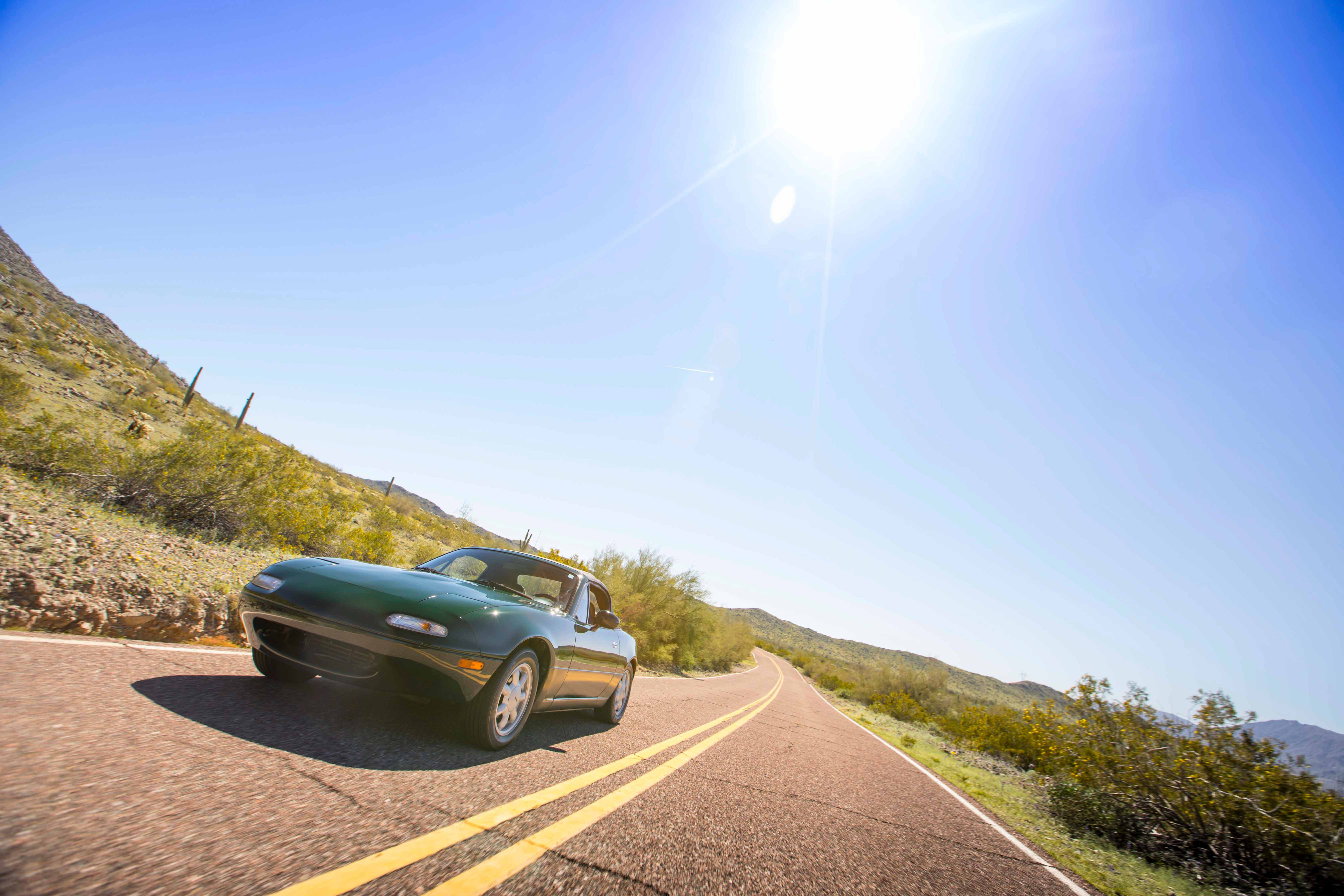Media | Articles
Mazda Miata: Greatest car of the 1990s
As Classic Car Appreciation Day (July 13) approaches, we’ll be counting down each day with the greatest vehicle of each decade, from the earliest days of the automobile to the present. It’s by no means a final, definitive, for-all-time list, so please weigh in—respectfully—in the Forums with your comments, endorsements, and disagreements. Today: the 1990s.
People don’t just say “Miata is always the answer,” because it’s funny. Fact of the matter is, Mazda’s spunky little roadster will go down as one of the greatest success stories in automotive history, rejuvenating the moribund convertible market and becoming the world’s all-time best-selling roadster.
Strangely enough, the Miata (known as the MX-5 everywhere else in the world) is in large part the masterful stroke of an American journalist named Bob Hall, who had the ear of Mazda head of R&D Kenichi Yamamoto. As Don Sherman notes in his Miata history, Hall was a lifelong lover of British roadster, and in 1978 he pitched Yamamoto to create a MG or Lotus-Elan-like lightweight sports car that would be simpler and more affordable than the contemporary RX-7 that already fulfilled Mazda’s sports car niche at the time.


Three years after the seed was planted, by which time Hall had become a product planner at Mazda’s California R&D facility, Yamamoto gave him the green light to start studying the idea in earnest. By 1985 the car that would become the MX-5 was approved for production, faithful to its front-engine, rear-drive, four-cylinder roadster vision.
Marketplace
Buy and sell classics with confidence
Launching for the 1990 model year (kicking off the so-called NA-generation) with a 1.6-liter four-cylinder making 116 horsepower, five-speed manual transmission, and independent suspension and disc brakes all around, the Miata was an instant sensation. It was affordable, fun-loving, and weighed just 2200 pounds. The car’s positively pure and balanced sports car spirit won over the hearts of drivers everywhere, and to this day the cars are mainstays of autocrosses, open track days, and racing efforts all over the world. The generation of more luxury-oriented roadsters that followed—the BMW Z3, Porsche Boxster, Audi TT, and Mercedes-Benz SLK—simply would not have existed without Mazda proving there was copious demand for an entry-level two-seat sports car.
There are so many Miatas out there that the car remains cheap and totally attainable, and its Japanese build quality and dedicated engineering makes it both reliable and feasible to maintain.

The Miata has remained in continuous production since its debut and remains true to its original ethos today. Even now, in the days of horsepower wars run amok, a recently announced power bump for the current ND-generation roadster brings output to a humble 181 hp. At the same time, few sports cars in the modern world weigh 2330 pounds, and that’s what you notice when you’re carving mountain roads in a Miata, with a big, stupid grin plastered on your face.
Honorable Mention:
On the other end of the performance spectrum, the original Acura NSX rewrote the book on what a supercar could and should be, forcing Ferrari and Lamborghini to finally take Japan seriously on the high-end performance stage
America’s supercar from the very beginning, people will remember the V-10 Dodge Viper for its sheer tenacity and rawness. Its devilish equal may never hit showrooms again.
A legendary icon from the moment of its arrival, the McLaren F1 was the last word in ultimate performance for years after it went out of production. It stands wholly in a league of its own and remains among the most collectible and valuable cars on the market.










20180709180455)

